
Most people are familiar with the terms metal and nonmetal. However, few are conversant with materials that lie between the two main types of materials—metalloids. The uses of metalloids are even more unknown.
Metalloids are intermediate materials, featuring a myriad of properties that drive various crucial aspects of the world economy. Boron, Antimony, Arsenic, and Germanium are proof that a material doesn’t have to be an absolute metal or non-metal to be useful.
Biological agents, electronics, semiconductors, and glasses are only some of the popular uses of these intermediate materials. Knowledge of how these materials are categorized, their properties and uses, and processing capabilities can help businesses choose the right metalloid and metalloid manufacturing partner.
In line with this, ProleanTech provides this coverage of the fascinating chemical elements. For us, metalloids are interesting, yes, but not in any way new. Our EDM machining services involve these materials, albeit with technical adjustments.
Read on for more insights about the uses of metalloids.
To Start, What Are Metalloids?
According to the scientific definition of metalloid, this is any element that exhibits chemical and physical properties of both metals and nonmetals. Another name for a metalloid is a nonmetal. With a blend of properties, metalloids tend to be very versatile.
ProleanTech frequently taps into the diverse capabilities of the materials through advanced techniques such as electrical discharge machining (EDM) to build parts for electronics, semiconductors, and many others.
While metalloids are generally not some of the materials suitable for EDM Process, there are exceptions, especially where the metalloids are not pure.
Interestingly, metalloids are very few, less than 10 to be precise. Silicon is the most prominent, but there are others like arsenic and boron.
Historical Aspects Of Some Metalloids
Metalloids have a long history, with each element having a unique origin or discovery path. For instance, Germanium is related to the works of the German Clemens Winkler. He discovered the element in 1886 and named it after his native country.
Boron has an Arabic connection, particularly in relation to the word ‘Flux’. Olden before were already using the element for ceramics and as a cleaning agent.
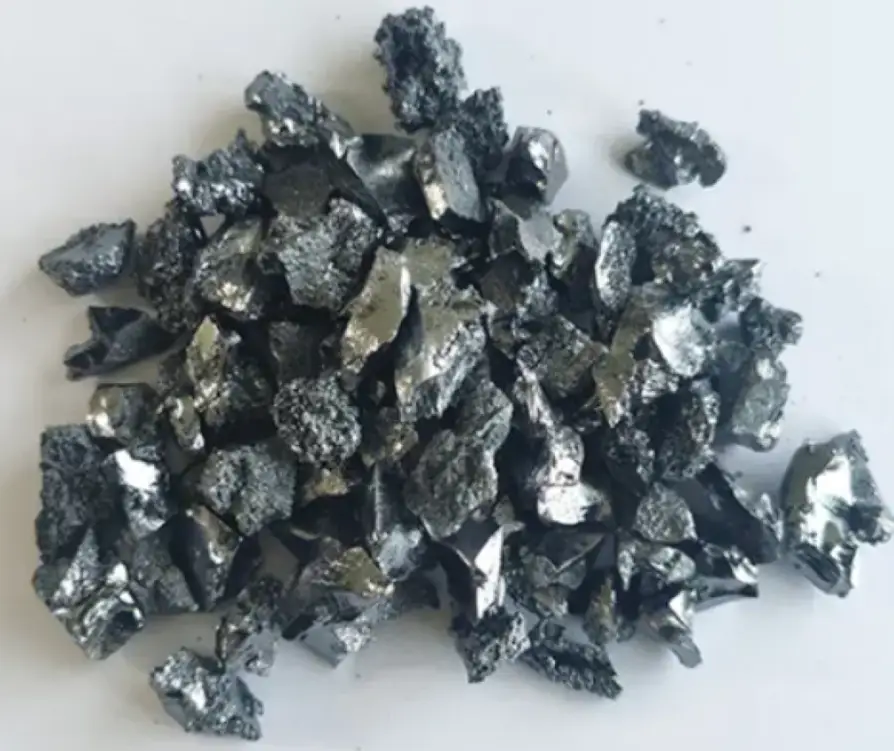
Boron metalloid
Another notable metalloid is Silicon, which was used by humans as early as 3000 BC. The Glass and pottery industry thrived back then already in connection with silica. However, it was not until Jöns Jacob Berzelius’s discovery of the pure form that the knowledge of characteristics and applications expanded.
![]()
Pure raw silicon
Here’s The Uniqueness Of Metalloids
Metalloids are unique in their appearance and capabilities. The metallic appearance can be deceiving because chemically, these materials behave like nonmetals.
Combining metalloids with metals can produce alloys, which are useful in some essential industries. The specific property of a semi-metal can determine which manufacturing process to use, so the key differences between wire and sinker EDM techniques are worth noting
Try Prolean Now!
What Are The Properties Of Metalloids?
As we have mentioned, a look at a metalloid suggests a metal. However, a chemical analysis or test reveals nonmetal behavior. You can be sure not to find these elements in applications where mechanical metalloid properties are key.
Note that the behavior of these elements depends on the reacting elements. Metalloids could still behave like metals in certain situations.
So, what are metalloids in terms of periodic table positioning, chemical properties, and physical properties metalloids?
Metalloids’ Position In The Periodic Table
The periodic table helps classify elements in many ways. One of the popular classifications for guidance on usage is metals, nonmetals, and metalloids.
We can use the stair-stepped demarcation that runs from Polonium (Po) to Boron (B) as a reference. Elements on the right of that line can be classified as nonmetals, while those on the left are metals.
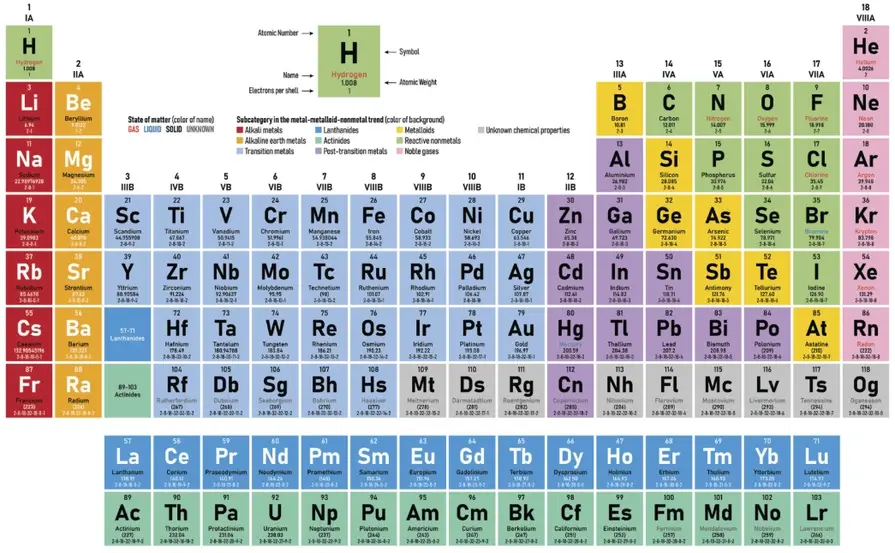
The periodic table of elements
Elements at this border are semimetals or metalloids. They include Boron (B), Silicon (Si), Germanium (Ge), and Arsenic (As). Others are Antimony (Sb), Tellurium (Te), and Astatine (At).
What Are The Physical Properties Of Metalloids?
The physical metalloid properties are typically a blend of those of metals and nonmetals. These materials are normally brittle and have a lustrous appearance at room temperature.
Their boiling and melting points are usually intermediate between metals’ and nonmetals’. A good example is the melting point of boron (2079 °C), which exceeds nonmetals but is lower than metals.
While some metalloids have semiconductor capabilities, these elements are generally poor electrical conductors. The materials can be used either as insulators or conductors based on factors such as temperature and impurity level.
On thermal conductivity, metalloids perform better than nonmetals, but not to the level of metals. This property varies, though, so a manufacturer of thermoelectric products should take this into account.
Other physical properties of metalloids include intermediate brittleness, densities, and hardness. Consider these properties when looking at the guide on the Pros and Cons of EDM: A Balanced Perspective.
The Chemical Properties of Metalloids
When metalloids undergo chemical changes, several interesting aspects emerge. The chemical behavior of these elements is mostly similar to that of nonmetals. They are renowned for their reactions with nonmetals to form compounds.
They can also react with metals to form alloys, some of which have crucial industrial applications.
Try Prolean Now!
Different Metalloids And Their Applications
The chemical and physical properties of metalloids highlighted above are useful in industrial applications. ProleanTech has mastered the processing of various metalloids for use in different industries.
As we outline some common metalloids and their applications, consider looking at our range of EDM Machining Services. Provided a metalloid qualifies in terms of its material properties and electrical conductivity, you can bank on us to make it useful through quality machining.
Let us look at an overview of applications of popular semimetals:
Silicon For Semiconductors
Silicon is widely regarded for its semiconducting capabilities. The metalloid has a supporting atomic structure, specifically a tetravalent arrangement. The material’s diamond cubic crystal lattice is equally instrumental.
![]()
The crystal structure of pure silicon
Silicon is useful in integrated circuits (ICs), transistors, sensors, and other electronic devices. There are many other applications of the metalloid that warrant understanding EDM drilling for precision holes in relation to the manufacturing processes involved.
Partner with ProleanTech for all your silicon EDM machining requirements. Once you ask for a quote, our team will respond with a custom pricing estimate in readiness for part machining.
Boron In Aerospace Applications
The doping capability of Boron is the mainstay of this metalloid’s widespread application in the critical aerospace industry. This element easily creates borides with aluminum, copper, and titanium, which are perfect in aerospace manufacturing.
Combining boron and carbon forms a tough ceramic called boron carbide (B₄C), which is perfect for the aerospace industry because its melting point exceeds 5600 degrees Celsius. This material is used in cockpit enclosures and crew seats.

Aircraft seats
Read this guide of Mastering Sink EDM Techniques to discover how the process can be used to generate parts for the relevant industries.
Tellurium For Steel Alloys
This silver and brittle naturally occuring semi-metal is rarer than gold, but it can be found in copper ore bodies. It has a unique property of being non-reactive to water or air.
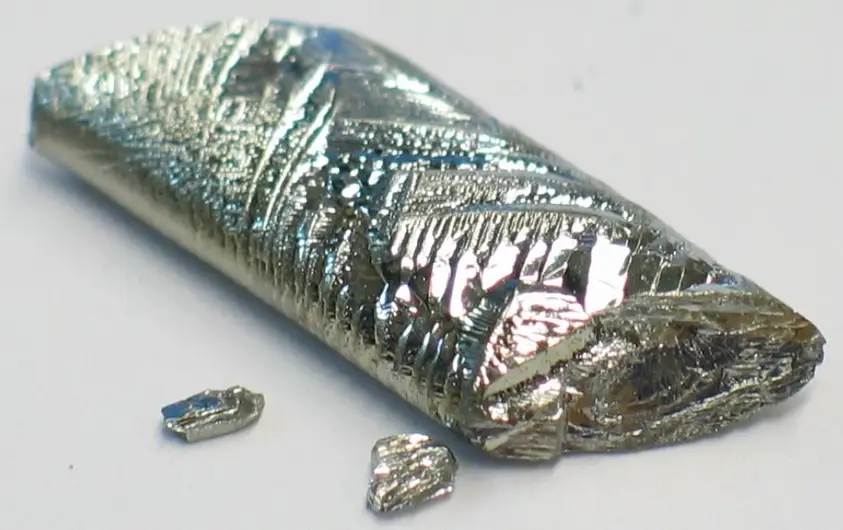
Tellerium
A popular application is in steel alloys, mostly to enhance machinability. Approximately 50% of the metalloid’s application is in this area. Our Guide to EDM Machining for Complex Parts gives a glimpse of what you can achieve with this product, even for complex parts.
Germanium In Solar Panels
The growing solar panel technology has brought to the fore the importance of this brittle metalloid. Its multi-junction solar cells perform better than those of silicon. That explains why NASA prefers the metalloid for solar cells in Space stations.

Solar arrays in space station
Other Common Uses of Metalloids
Here are other notable uses of semi-metals that could apply for your business:
- Silicon in solar panels
- Boron for neutron absorption in nuclear reactors
- Arsenic in farming pesticides
- Antimony as a flame retardant in the electronic and textile industries
- Tellerium in electrical components for its electrical conductivity
Metalloids Manufacturing Through Electrical Discharge Machining (EDM)
When it comes to using metalloids, there’s more to just identifying the best CNC materials. EDM machining is a popular service at ProleanTech, and it works for metalloids, alongside metals and non-metals.
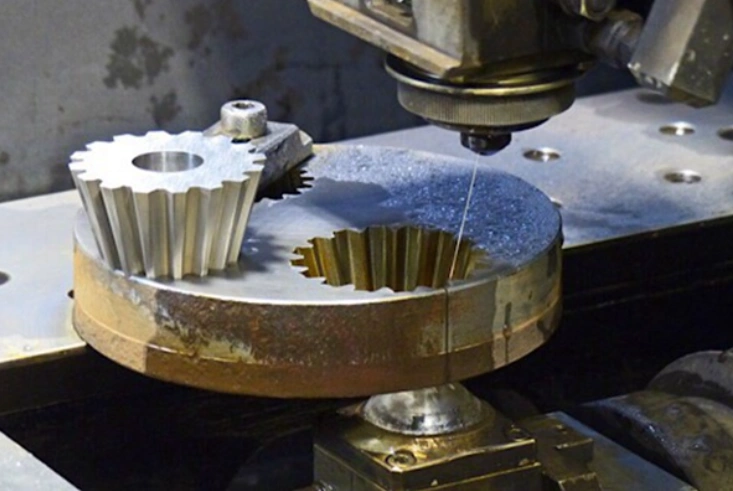
EDM method
Provided a semi-metal has sufficient electrical conductivity, the EDM can be applied. The brittleness of these materials is a challenge for conventional machining processes. EDM is a non-contact machining process, hence, it works like magic for suitable metalloids.
A notable challenge would be a relatively slow machining pace due to the semiconducting nature of silicon, for instance. Research and development are ongoing to improve the effectiveness of the EDM machining process for these unique materials.
To learn more about how EDM works and enhances the application of metalloids in your business, get in contact with our experts today.
In Conclusion
The semiconductor tag for metalloids indicates one of the main uses of these elements, as highlighted in this article. There are other uses, including alloying other materials and creating solar cells.
Whatever the application, the need for proper manufacturing cannot be overstated. Given the rarity and high cost of some of these semi-metals, gambling with an unknown manufacturer should not be on your cards.
Call ProleanTech today and ask for the best EDM machining services.
FAQs
Is Aluminum A Metalloid, Metal, or Nonmetal?
Aluminum is a metal.
The Metalloid That Is Used to Make Computer Chips Is?
The metalloid that is used to make computer chips is silicon.
Is metalloid a semiconductor?
Yes, many of the metalloids are semiconductors.
Where are metalloids found?
In the periodic table, metalloids are in the p-block, a distinctive line demarcating metals and nonmetals.
What are the main uses of metalloids?
The main uses of metalloids are alloys, flame retardants, and semiconductors.
What is the most commonly used metalloid?
Silicon is the most commonly used metalloid.
What is the rarest naturally occurring element?
Astatine is the rarest naturally occurring element.



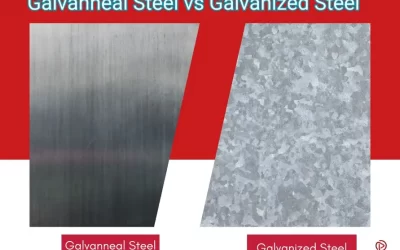
0 Comments